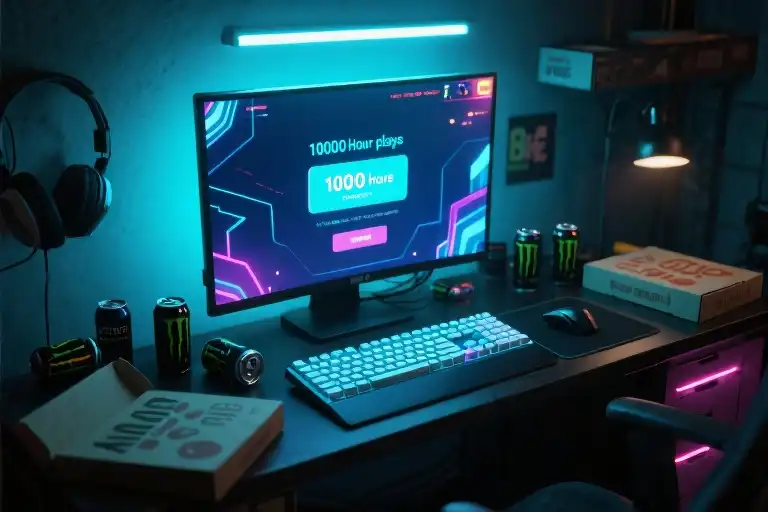The student sat in the same seat every Tuesday and Thursday, third row from the front, left aisle. For two consecutive semesters, I watched him diligently take notes during my Social Psychology lectures. His questions during discussions were thoughtful, often revealing a sharp understanding of the material. Yet when final grades were due, his submission folder remained empty—not just once, but across six months of coursework. No papers, no presentations, not even the low-stakes weekly reflections. Just blank space where his work should have been.
This wasn’t an isolated case. Over twelve years of teaching, I’ve encountered countless variations of this pattern: the graduate student who requested seven deadline extensions for a single chapter revision, the promising applicant who missed their dream program’s cutoff by submitting materials three days late, the seminar participant who aced every class discussion yet mysteriously vanished on presentation days. Conventional wisdom would label these behaviors as laziness, lack of discipline, or moral failing. But here’s what my psychology training tells me: laziness doesn’t exist. Not in the way we commonly understand it.
Ever.
What does exist are powerful situational forces that shape behavior—forces we often overlook when quick judgments about character seem easier. As a social psychologist, I’m trained to see human actions as responses to environmental cues rather than manifestations of inherent traits. The fundamental attribution error, a cornerstone of our field, explains how we disproportionately blame personality (“they’re just lazy”) while underestimating contextual factors (“this task feels impossible given their current resources”). When a student repeatedly misses deadlines, I don’t see a defective individual; I see someone responding rationally to their circumstances. The real question becomes: what unmet needs or invisible barriers are driving this response?
Consider the physical environment’s role. That same student who skipped presentations? He later confessed the walk from his evening job to campus left him ten minutes late—just enough time for anxiety about interrupting the class to override his attendance. The perpetual chapter reviser? Her advisor’s vague feedback (“make it more rigorous”) created paralyzing uncertainty about what success looked like. These aren’t excuses; they’re diagnosable friction points in the motivational system. Our brains weigh perceived costs against rewards with brutal efficiency, and when the environment stacks costs too high—through unclear expectations, delayed gratification, or overwhelming complexity—procrastination becomes the predictable outcome.
This perspective isn’t about removing accountability. It’s about redirecting our problem-solving energy toward factors we can actually change. Labeling someone as lazy is a dead end; examining how task design, feedback timing, or physical spaces influence behavior opens pathways for meaningful improvement. The student who finally submitted work after I broke assignments into single-paragraph milestones wasn’t suddenly “less lazy”—he was operating in a better-designed system. That’s the power of situational awareness: it transforms moral judgments into engineering challenges.
So when you notice yourself or others caught in the procrastination cycle, pause the character accusations. Ask instead: what environmental redesign might make the desired behavior easier? What small adjustment to the when, where, or how could change everything? Because in the end, productivity isn’t about who you are. It’s about what surrounds you.
The Truth About Procrastination: A Misunderstood Behavior
During office hours last semester, a graduate student sat across from me clutching a coffee-stained draft of her thesis. ‘I know it’s terrible,’ she said, pushing the papers toward me. ‘I’ve had six months to work on this, but every time I sat down to write, I ended up reorganizing my bookshelf or deep-cleaning the kitchen.’ Her voice carried that particular blend of shame and frustration I’ve come to recognize after twelve years of teaching psychology. She wasn’t lazy—she’d logged countless hours in the library. Yet something kept derailing her progress.
This pattern repeats itself in various forms across campuses and workplaces. The undergraduate who starts researching his term paper at 2 AM the night before it’s due. The promising job candidate who misses application deadlines. The colleague who postpones giving feedback until it’s useless. Conventional wisdom labels this behavior as laziness, but that explanation crumbles under scrutiny. If laziness were the culprit, we’d expect consistent avoidance of effort across situations. Yet the same student who procrastinates on writing papers might spend hours perfecting a guitar solo or training for a marathon.
Recent studies challenge the ‘willpower failure’ model of procrastination. Research from the University of Sheffield (2019) demonstrates that people who score high in conscientiousness—a personality trait antithetical to laziness—often struggle with task delay when facing ambiguous requirements. The real issue lies not in some moral failing, but in the interaction between human psychology and environmental demands. Our brains evolved to prioritize immediate, certain rewards over distant, abstract ones—a survival mechanism that backfires in modern contexts where deadlines loom weeks or months away.
Three key misconceptions cloud our understanding:
- Moralizing Productivity: We treat timely task completion as a virtue rather than a skill influenced by context. This framing induces shame, which ironically fuels further avoidance.
- The Myth of Uniform Motivation: Assuming all tasks should elicit equal engagement ignores how environmental design affects our cognitive resources. Filing taxes will never provide the same intrinsic satisfaction as hobbies, nor should we expect it to.
- Overestimating Trait Stability: Labeling someone ‘lazy’ implies a fixed characteristic, when behavioral economics shows our ‘productivity’ fluctuates dramatically based on situational factors like task clarity and feedback timing.
Consider how physical environments shape behavior. A 2021 workspace study found that employees in open-plan offices spent 28% more time on procrastination behaviors than those in private offices—not because they became lazier, but because constant low-level distractions depleted their focus. Similarly, students trying to write papers in dorm rooms surrounded by gaming consoles and chatty roommates face an uphill battle against their surroundings, not their character.
The consequences of mislabeling run deep. When we attribute procrastination to laziness, we:
- Overlook solvable environmental barriers
- Trigger unproductive guilt cycles
- Miss opportunities to redesign systems for better human compatibility
Next time you notice yourself or someone else delaying tasks, try replacing ‘Why are you being so lazy?’ with ‘What about this situation makes action difficult?’ That simple reframe opens the door to practical solutions rather than moral condemnation.
The Social Psychology Lens: How Environment Shapes Procrastination
Standing in my campus office surrounded by half-graded papers, I noticed a pattern emerging from years of conversations with struggling students. The same phrase kept surfacing: “I know I should be working, but I just can’t make myself do it.” We’ve been conditioned to interpret this as personal failure – a lack of willpower or that catch-all villain we call laziness. But social psychology paints a different picture entirely.
The Fundamental Attribution Error in Action
Here’s what most people get wrong about procrastination: we overwhelmingly attribute behavior to personality traits while underestimating situational factors. Psychologists call this the Fundamental Attribution Error. When we see someone missing deadlines, we assume they’re disorganized or unmotivated. Rarely do we consider whether their environment actively works against productivity.
Consider two students:
- Student A completes assignments early in a quiet library carrel with natural lighting
- Student B struggles to start papers in a noisy dorm room facing a distracting courtyard
Identical coursework, dramatically different outcomes. Yet we’d likely describe Student B as “lazy” rather than recognizing how their physical space undermines focus. This misattribution creates unnecessary shame while ignoring fixable environmental barriers.
Self-Determination Theory: The Three Hidden Needs
Deci and Ryan’s Self-Determination Theory reveals why certain environments breed procrastination. Their research identifies three core psychological needs that must be met for sustained motivation:
- Autonomy: Feeling ownership over one’s actions
- Competence: Believing one can succeed at the task
- Relatedness: Connecting the work to meaningful relationships
When assignments feel imposed (lacking autonomy), when instructions seem confusing (undermining competence), or when work feels isolating (missing relatedness), procrastination becomes almost inevitable. I’ve watched brilliant students freeze on dissertation chapters not because they couldn’t write, but because their advisor’s vague feedback left them doubting their competence.
Your Environment Assessment
Let’s make this personal. Rate your typical work environment on these factors (1 = rarely, 5 = consistently):
| Factor | Rating | Notes |
|---|---|---|
| Clear task breakdown | Do you know exactly what step to do next? | |
| Immediate feedback | Can you see progress as you work? | |
| Minimal distractions | How often are you pulled off-task? | |
| Emotional safety | Do you fear harsh judgment for mistakes? | |
| Personal connection | Does the work feel meaningful to you? |
Scores below 3 in any area reveal environmental leaks draining your motivation. The good news? Unlike personality traits, environments can be redesigned. That student who failed my class twice? We created a study pod with peers, broke assignments into daily text-message prompts, and moved her workspace to a sunlit coffee shop. The transformation wasn’t about “trying harder” – it was about engineering the right conditions for success.
What emerges clearly from decades of research is this: procrastination isn’t a character flaw, but a mismatch between human psychology and task environment. When we stop blaming willpower and start optimizing contexts, lasting change becomes possible.
The Hidden Culprits Behind Procrastination
For years, I’ve watched students stare at blank documents with that particular glaze in their eyes – not the look of laziness, but something far more complex. The same pattern repeats across libraries, home offices, and coffee shops: capable people stuck in cycles of avoidance while deadlines loom. Through this lens, five recurring environmental traps emerge as the real architects of procrastination.
When the Map Lacks Landmarks
Task ambiguity might be the most insidious productivity killer. Consider Maya, a bright graduate student who spent weeks circling her thesis topic like a moth around a lamp. “I’ll start writing once I find the perfect angle,” she’d say, while accumulating 237 browser tabs of half-digested research. This isn’t indecision – it’s navigating without coordinates. Studies in cognitive load theory show our brains resist engagement when objectives lack clarity, triggering what psychologists call ‘avoidant coping.’ The solution often lies not in waiting for inspiration, but in creating artificial landmarks: breaking “write literature review” into “summarize three articles from 2017-2019” provides the cognitive handrails needed to begin.
The Silence After Sending a Message Into Space
Human motivation operates on a shockingly simple principle: we repeat what gets rewarded. Yet modern work environments routinely violate this basic law. Take software developer Raj, who described working on a six-month project as “shouting into a canyon and waiting for an echo.” When effort becomes disconnected from visible progress, our brain’s reward centers go dormant. Behavioral economists call this ‘temporal discounting’ – we instinctively devalue distant rewards. The fix? Engineering micro-feedback loops. One research group found that adding progress-tracker widgets to coding interfaces increased productivity by 22%, simply by making invisible effort visible.
An Attention War Zone
The average knowledge worker’s environment resembles a slot machine designed to hijack focus. Social media notifications, email pop-ups, and the siren call of multitasking create what neuroscientists term ‘attentional fragmentation.’ I recall watching a student attempt to write while his phone buzzed every 4.7 minutes (yes, we timed it). Each interruption triggered a 23-minute recovery period – a phenomenon well-documented in Gloria Mark’s research at UC Irvine. The solution isn’t just willpower; it’s designing what psychologist B.J. Fogg calls ‘attention-protective architecture.’ Simple changes like turning screens grayscale during work hours or using physical barriers (a closed door, specific work lamp) can create the cognitive equivalent of a clean room for concentration.
The Perfectionism Paradox
Evaluation anxiety often masquerades as high standards. Clinical cases reveal a troubling pattern: the more invested people are in doing something well, the more likely they are to not do it at all. Sarah, a pre-med student, would rewrite lab reports five times before submission – then miss deadlines. This isn’t diligence; it’s what psychologists term ‘self-handicapping’ – creating conditions to explain potential failure. Research from Stanford’s Carol Dweck shows that shifting evaluation criteria from ‘proving ability’ to ‘improving skills’ reduces this paralysis. One practical reframe: setting artificial ‘shitty first draft’ deadlines (as author Anne Lamott advocates) separates creation from refinement phases.
When Autonomy Goes Missing
The most overlooked factor might be the absence of personal connection to tasks. A telling pattern emerged in my course evaluations: students skipping assignments they felt were ‘forced’ while excelling in self-designed projects. Self-determination theory explains this beautifully – without autonomy, even interesting work feels like compliance. The solution lies in finding what psychologist Steven Hayes calls ‘workable values’ – connecting tasks to personal meaning. A law student I advised began framing tedious case briefs as ‘building my future courtroom voice,’ transforming obligation into self-expression.
These five traps reveal procrastination not as a character flaw, but as a series of environmental mismatches. The good news? Unlike personality traits, situations can be redesigned. Sometimes the most productive thing you can do isn’t ‘try harder,’ but rearrange your surroundings to make trying unnecessary.
Practical Strategies for Different Settings
Moving from theory to practice requires tailoring solutions to specific environments. The same psychological principles manifest differently in academic, professional, and personal contexts. What works for a graduate student struggling with dissertation writing won’t necessarily help an office worker facing quarterly reports, or a parent trying to complete household projects.
Academic Environments: Small Wins Matter
University libraries are filled with students staring at blank documents, caught in what researchers call the ‘starting problem.’ The sheer scale of academic work – 10-page papers, comprehensive exams, multi-year research projects – creates overwhelming mental barriers. Breaking tasks into micro-goals transforms abstract challenges into manageable actions. Instead of ‘write literature review,’ the assignment becomes ‘summarize three articles from this folder.’
Peer accountability structures provide the immediate feedback that institutional systems often lack. Study groups using shared progress trackers or scheduled writing sprints create artificial deadlines between formal due dates. One effective method involves exchanging draft sections with classmates for brief comments – not full critiques – creating low-stakes evaluation points that maintain momentum.
Workplace Solutions: Designing Focus Zones
Open office plans present particular challenges for maintaining concentration. Simple environmental cues can establish psychological boundaries. Noise-canceling headphones serve as universal ‘do not disturb’ signals, while physical props like standing desk adjustments or specific lighting conditions can trigger focused states. The key lies in consistency – repeatedly associating particular configurations with deep work sessions.
Time-blocking techniques like the Pomodoro method gain effectiveness when adapted to individual chronotypes. Morning people might schedule analytical tasks in early 25-minute intervals, while night owls could reserve creative work for evening sessions. Digital tools should support rather than dictate these rhythms; calendar apps allowing flexible rescheduling of time blocks accommodate shifting daily realities better than rigid productivity systems.
Home Contexts: Rituals Over Willpower
Domestic spaces contain endless potential distractions and lack institutional accountability structures. Establishing simple pre-task rituals creates psychological transitions between relaxation and productivity modes. The act of brewing tea, adjusting a chair’s height, or playing a specific playlist can become reliable triggers for work sessions. These needn’t be elaborate – even clearing a square foot of desk space provides a physical representation of mental preparation.
Environmental resets prove particularly valuable in shared living situations. Portable work kits – containing headphones, task lists, and necessary materials – allow quick creation of focused spaces anywhere. The psychological impact comes from visual separation between leisure and work areas, however temporary. Research on ‘implementation intentions’ shows specifying exact times and locations for tasks (‘after breakfast at kitchen table’) significantly increases follow-through compared to vague plans (‘sometime today’).
Each setting demands slightly different applications of core psychological principles: making progress visible, creating immediate feedback loops, and designing environments that support rather than fight natural tendencies. The most effective strategies acknowledge contextual realities while providing enough structure to bypass decision fatigue – that exhausting mental state where simply choosing what to do next consumes energy needed for doing it.
Tools and Extended Support
When we finally understand procrastination as an environmental design problem rather than a personal failing, the tools we choose take on new significance. The right applications and resources shouldn’t feel like digital taskmasters cracking whips at our supposed laziness – they’re more like landscape architects helping us reshape the terrain of our daily lives.
Focusmate transforms the isolation of solo work into a socially accountable experience. What makes it remarkable isn’t the video conferencing technology itself, but how it replicates the subtle environmental pressures of a shared study hall. The presence of another working human (even virtually) satisfies our fundamental need for relatedness that self-determination theory identifies as crucial for motivation. I’ve recommended this to students who struggle with thesis writing, particularly those who miss the structure of campus libraries. The 50-minute sessions mimic natural work rhythms better than open-ended “work until you collapse” marathons.
Beeminder takes behavioral economics principles and makes them personally actionable. By putting real monetary stakes on goal commitments, it creates immediate consequences that many procrastination-prone environments lack. One graduate student I advised used it to break her cycle of endlessly revising dissertation chapters – setting weekly targets with incremental financial penalties proved more effective than any advisor’s nagging. The brilliance lies in how it externalizes the vague internal pressure of “should” into concrete environmental feedback.
For those needing less structured support, Forest‘s digital arboretum provides gentle environmental shaping. The visual growth of virtual trees satisfies our craving for visible progress that academic or professional work often lacks. One creative twist I’ve seen: users plant virtual species corresponding to different task types – oak trees for deep research work, flowering plants for creative brainstorming. This subtle environmental cueing helps transition between mental modes.
Beyond digital tools, James Clear’s Atomic Habits offers particularly insightful chapters on environment design. His concept of “habit stacking” – attaching new behaviors to existing environmental triggers – resonates strongly with what I’ve observed in successful students. One transformed her chronic paper-writing delays simply by always drafting at the same café table with the same pre-writing ritual (ordering chamomile tea, arranging three specific pens). The environmental consistency became the scaffolding for behavioral consistency.
What these solutions share isn’t technological sophistication but psychological intelligence. They don’t try to “fix” the procrastinator but rather redesign the procrastination-prone contexts. The best tools act like environmental prosthetics – compensating for the motivational gaps in our current settings while we work on more permanent structural changes.
When evaluating any anti-procrastination tool, ask: Does this address one of our five situational traps? Does it provide the autonomy-supportive structure suggested by self-determination theory? Does it make invisible progress visible? The answers will tell you whether you’re looking at another guilt-inducing productivity gimmick or a genuine environmental intervention.
A final thought: the most powerful tool might be reevaluating what we consider “tools” at all. That carefully arranged desk lamp creating a pool of warm light on your workspace? That’s environmental design. The decision to answer emails at the standing kitchen counter rather than your cozy sofa? That’s context engineering. Once you start seeing your entire surroundings as potential procrastination solutions, you’ll never call yourself lazy again.
The Final Step: Turning Insight Into Action
After years of watching students and professionals struggle with procrastination, I’ve learned one undeniable truth – awareness alone changes nothing. That moment when we finally understand why we procrastinate is powerful, but it’s also dangerously seductive. We mistake the clarity of insight for actual progress. The real work begins when we start reshaping our environments.
Here’s what you can do today – not tomorrow, not after you finish reading this, but right now:
- Change your lighting. Studies show cool white light (5000K-6500K) enhances alertness and concentration better than warm lighting. Simply adjusting your desk lamp could provide that subtle environmental cue your brain needs to focus.
- Create a ‘distraction pad’. Keep a notebook specifically for writing down intrusive thoughts (“I should check email”, “Need to buy groceries”) instead of acting on them. This satisfies the brain’s urge to ‘capture’ the thought without derailing your work.
- Set a visible timer – not digital. The physical act of turning an analog timer creates a stronger psychological commitment than clicking a phone app. Even if you only commit to 15 minutes.
These aren’t revolutionary suggestions, and that’s precisely the point. Effective environmental tweaks often feel laughably simple. Their power comes from consistency, not complexity.
When my most chronic procrastinators finally started making progress, it was never through dramatic overhauls. It was the student who began leaving her annotated readings next to her coffee maker, so she’d review them during her morning routine. The PhD candidate who taped a single index card above his desk with the question: “What’s the smallest possible step right now?” The executive who replaced her chair with an exercise ball not for ergonomics, but because the slight discomfort prevented endless scrolling.
Procrastination isn’t a character flaw to overcome through sheer will. It’s your environment whispering – sometimes shouting – that something needs to change. The clutter on your desk, the endless notification pings, the vague project milestones, the isolation of working alone… these aren’t just inconveniences. They’re active barriers your brain is quite rationally avoiding.
So we end where we began: with that student who took my class twice without submitting anything. What finally worked? She started attending class in the library instead of her dorm. That’s it. The simple shift from a space associated with relaxation to one designed for work created just enough friction against procrastination. Two years later, she emailed me photos of her senior thesis – not because it was extraordinary, but because completing it at all had once seemed impossible.
Your environment is speaking. Are you listening?





